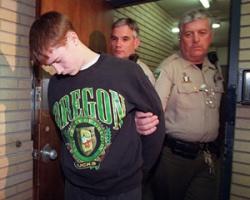School shootings are an especially American form of horror show, starring several key elements from our national fantasy life: high school, the underdog’s revenge (however brief and illusory), violence and, above all, guns. They rarely occur outside the U.S., and when they do, they’re perpetrated by adults, not teenagers. Our adolescent massacres are, as Jonathan Fast, a professor of social work, astutely observes in his new book, “Ceremonial Violence: A Psychological Explanation of School Shootings,” a type of terrorism, but we have a hard time seeing them as such. We know, or think we know, why terrorists blow themselves up in Middle Eastern marketplaces, but we can’t agree on how a 14-year-old winds up toting a semiautomatic weapon to school and opening up on a crowd of classmates and teachers. In the media circus that follows, the list of purported causes is long — lax parenting, video games and movies, child abuse, declining moral values, religious fanaticism, high school culture, antidepressant drugs, genetics, mental illness, gun worship and so on. Almost before the bodies get cold, partisans have turned to fighting among themselves for supremacy of their pet theories.
Discussion Starters
1.) As the story notes, there is no one problem that lead children to commit murder and other atrocities. Have you noticed signs indicating students with whom you work troubled to the point of committing crimes? Have they mentioned peers who are struggling with such issues?
2.) How would you counsel teens who are wrestling with these issues, and how do you work to prevent such events from happening in the lives of your students?
3.) From Scripture, what can you find on the subject of murder (see




